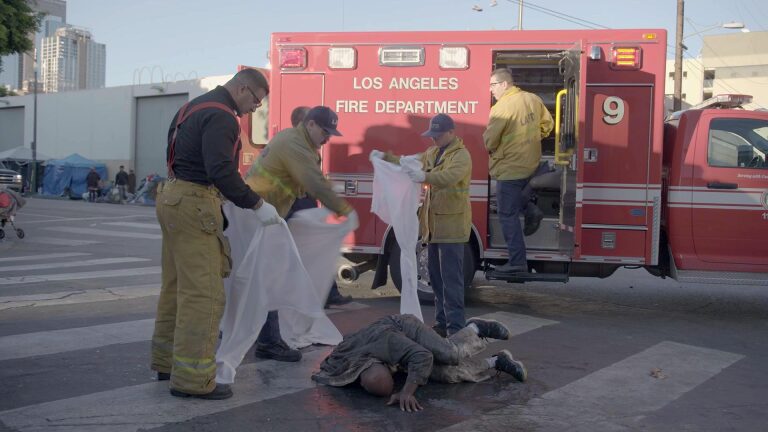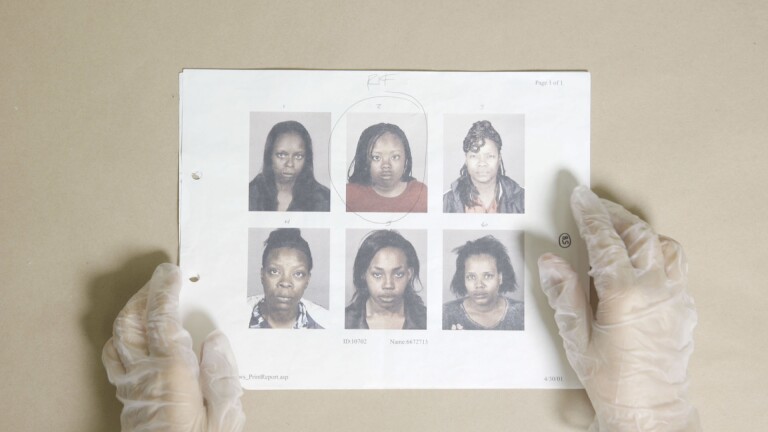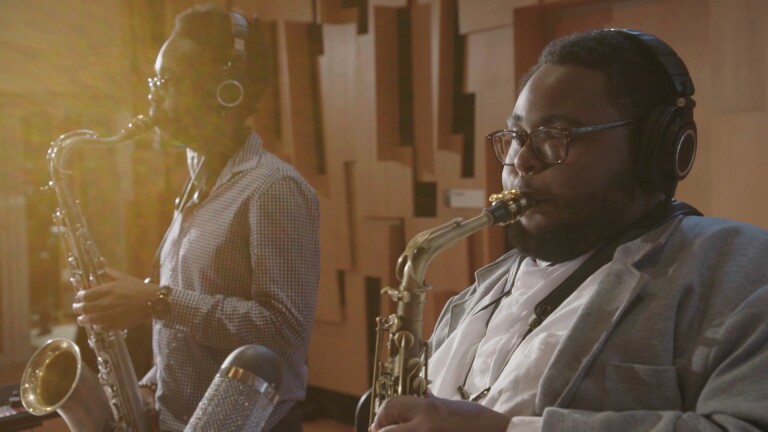
'Feathers of Fire': Spectacular Shadow Play
A 10th century Persian tale of star-crossed lovers is the basis for a stunning production. The innovative creators behind “Feathers of Fire” lift shadow theater to a new level. 140 puppets and digitally animated backgrounds are projected onto a cinema-size screen accompanied by original live music. Reporter Nic Cha Kim goes behind the scenes to see how this gorgeous production was created.
For more information about "Feathers of Fire: A Persian Epic," visit Kingorama.com
Transcript
Nic Cha Kim: Lovers beset by obstacles! Sea faring ships and sea dragons! And an epic battle to save ancient Persia! This might look like the next big-budget animated Disney movie but would you believe you're watching live theatre? The play is called "Feathers of Fire" and the visuals are jaw-dropping. The technique is called shadow theater and the tradition is as old as humankind.
Hamid Rahmanian: Playing with the shadow is probably one of the very first form of storytelling because when you are in the cave and you have a fire and you have the moment you pass behind the fire and you see your shadow... next you know, some people they come and create stories through the shadow.
Nic Cha Kim: Graphic Artist Hamid Rahmanian was born in Iran. He arrived in America 20 years ago. He is a Guggenheim Fellow and an award-winning visual artist and filmmaker. In Shadow Theater, instead of having actors perform on a stage under lights, they act backstage in front of lights. They use two very bright video projectors that also cast animated images. Backstage, it's pitch-black. Actors wear 3-dimensional costumes and masks and manipulate 2-dimensional puppets. Take this scene. Two lovers are separated by castle walls. She lets down her hair for him to climb.
Nic Cha Kim: How do you get them to show up on screen?
Hamid Rahmanian: These are some of the puppets that we built.
Nic Cha Kim: So this is the Rapunzel scene?
Hamid Rahmanian: Yes, this is the Rapunzel scene. This is the hair. There is extra hair, which it comes here. And then they push it..
Nic Cha Kim: Yes.. this huge castle is simply a silhouette of this small wood cutout. This is how he animates how the hair... how she drops her hair?
Hamid Rahmanian: Exactly. Every puppet designed for a specific mood and a specific scene.
Nic Cha Kim: How many puppets do you have for the show?
Hamid Rahmanian: Around 160.
Nic Cha Kim: Wow! The costumes and masks are just as intricate.
Hamid Rahmanian: This is the mask of "Sea Morg."
Nic Cha Kim: Wow!
Hamid Rahmanian: We sort of design all the color gel where it goes so the shadow would be very colorful.
Nic Cha Kim: That's how you get color on the screen?
Hamid Rahmanian: Yes, exactly. All the puppets are like that.
Nic Cha Kim: Now why do you have the profiles on two different sides like that?
Hamid Rahmanian: Because when the actor wearing this… they can see themselves when they are acting, but the shadow would be in profile.
Nic Cha Kim: The technical wizard behind the masks is shadow master, Larry Reed.
Larry Reed: We've got a bunch of innovative stuff happening in this. One is the classical shadow light style of mask which is a 3D mask and the other is the video projections for the first time as a light source and the backgrounds.
Nic Cha Kim: "Feathers of Fire" is part history, part mythology, and part epic. Adapted from the "Shahnameh: the Book of Kings," the story spans thousands of years and tells the full story of Persia. Every child in Iran grew up with it. What inspired you to write Feathers of Fire?
Hamid Rahmanian: Well, I want to introduce Western audience to some of the beautiful literature and love stories of my culture. So I thought that would be excellent to create one of the love story from the Shahnameh. The reason we Iranians speaking Persian today is because of this book. This book single-handedly kept the Persian language alive.
Nic Cha Kim: In this scene the lovers, Zaul and Rudabeh, meet for the first time. Notice how they cut between this wide scene to this close-up scene? How do they do this?
Hamid Rahmanian: This is the first time in this technique we are using these two projectors to cut between one shot to another shot.
Nic Cha Kim: Dina Zarif is one of the actors in "Feathers of Fire." She plays the princess, Rudabeh.
Dina Zarif: Rudabeh is the one who falls in love with Zaul and this is forbidden love.
Nic Cha Kim: Forbidden love -- because their families are feuding. Against all odds, the couple gets married and gives birth to Rostam -- the Hercules of Iran. This is Dina's first time working on a shadow play.
Dina Zarif: It was bit of journey for me because I had to bring out a more feminine part of me because especially in the shadow you don't see the person.
Nic Cha Kim: Do you have to exaggerate your emotions?
Dina Zarif: Yeah. I was actually exaggerating a lot.
Nic Cha Kim: Dina is also a puppeteer and made the costumes. So how does one design a 3D costume for a shadow play that will only be seen two dimensionally on screen?
Dina Zarif: I actually looked at lot of sculpture material because I had to like stiffen a lot of these laces or even some parts of the feathers in order to have a better shadow and sharper shadow.
Nic Cha Kim: The production requires perfect timing and technical precision. That responsibility belongs to this man: Mohammad Talani. He's more than a stage manager. He's a digital media director and animator.
Mohammad Talani: We have 130 animated backgrounds and over 700 audio cues in total, a thousand sixty-nine cues and they're all played during the show.
Nic Cha Kim: Azam Ali composed the score to "Feathers of Fire" with her husband, Loga Ramin Torkian. They also worked off storyboards.
Azam: Just from seeing the images, we knew it was going to be something extraordinary, something that was going to transcend the cultural boundaries.
Nic Cha Kim: I heard sounds from instruments I'm not familiar with, I think.
Azam Ali: The main instruments here are very traditional instruments… Loga plays the kaman which is a boat guitar… He also plays the "sahz" which is a traditional instrument from Turkey. And several other instruments that are Iranian-traditional instruments.
Nic Cha Kim: Azam herself played the percussion and sang vocals. And if you listen carefully, you can also hear the “koval,” which is a Turkish flute. As the story progresses Zaul must convince a king to make peace, not war. In the end, the king chooses peace.
Hamid Rahmanian: I thought I would like to do something that highlight the strengths of my culture rather than just pointing out the shortcoming.
Azam Ali: It shows a side of Iranian culture that is inclusive, is integrated into the country that is now our home and I think that message is almost more important.
Hamid Rahmanian: We are new immigrants in United States. We have only 30 to 35 years in the history of immigration here.
Azam Ali: We ourselves are a fusion of so many cultures now, you know. We've been born in one place, and migrated so many times.
Hamid Rahmanian: Everything I do, it has this cultural component into it, to give something back to the society because the society that gave me everything to grow here, I think I need to create diversity and create more colors to create a healthier society in America.
Nic Cha Kim: Tonight the show is sold out. The theater is packed. The curtain opens on an exquisite rendition of an epic tale. I’m Nic Cha Kim for "SoCal Connected."























